Scandinavian minimalism is an aesthetic inspired by regional trends in Nordic countries; it values simplicity, functionality and calmness.
Scandinavian minimalism — design, decor, lifestyle
Published 2 years ago

In this region, quality and uncomplicated practicality typify consumer goods and home design.
Here at Carl Friedrik, our designs are inspired by the Scandinavian minimalist movement. This is evident in the clean-lined, pared-back look and functionality-forward nature of our products.
In this article, we’ll explore the key ideas associated with Scandinavian minimalism, touching on everything from the history of the movement to how you can achieve Scandinavian-inspired home decor. But let’s start with a definition.
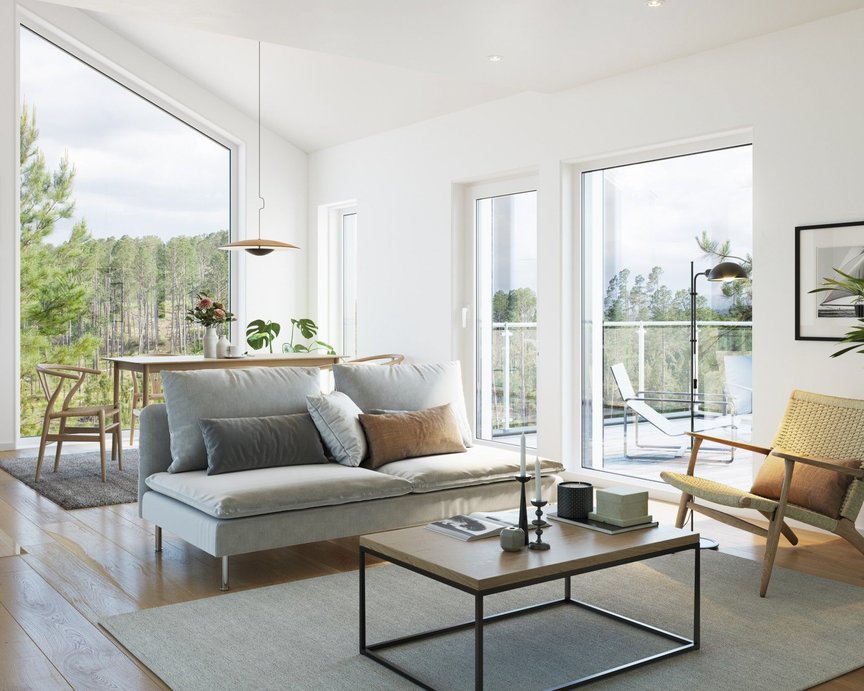
What is Scandinavian minimalism?
Scandinavian minimalism is partly a philosophy born of necessity and a set of interior design principles.
It originated out of a need for endurance and comfort in a challenging climate. The harsh and prolonged winters of northern Europe necessitated functional structures that could withstand severe conditions. For communities sheltering indoors during long winters, there was also a yearning for open, inviting rooms and spaces that encouraged light to spread.
In this sense, Scandinavian minimalism differs from similar philosophies in America or Japan, because it is less about simplifying life for an open mind and more about reducing what is unnecessary to leave what is essential. Cultures in this region are statistically very happy, enjoy high standards of living and focus on balance and connection. The outcome of this philosophy is often the shunning of materialism and a preference for sustainability and simplicity.
But what is Scandinavian style? There are a few components of interior design that together constitute what has become a familiar Nordic minimalist aesthetic:
-
The use of subtle, pastel tones is favoured, with crisp blocks of color and
accents
-
Light is a key component, from architecture to interior design
-
Natural elements are often featured in everything from well-made furniture
to locally spun textiles and indoor plants
- Meticulous optimisation of space
Quality craftsmanship, functional spaces, tranquillity and simple decor all coalesce in a key point of both philosophy and design, which is known as hygge.
Hygge is a Danish and Norwegian concept that encompasses a feeling of comfort, pleasure, warmth, and cosiness. In the long winters in this area of the world, hygge is practiced daily when people gather in small spaces to share a candlelit meal and practice gratitude for togetherness.
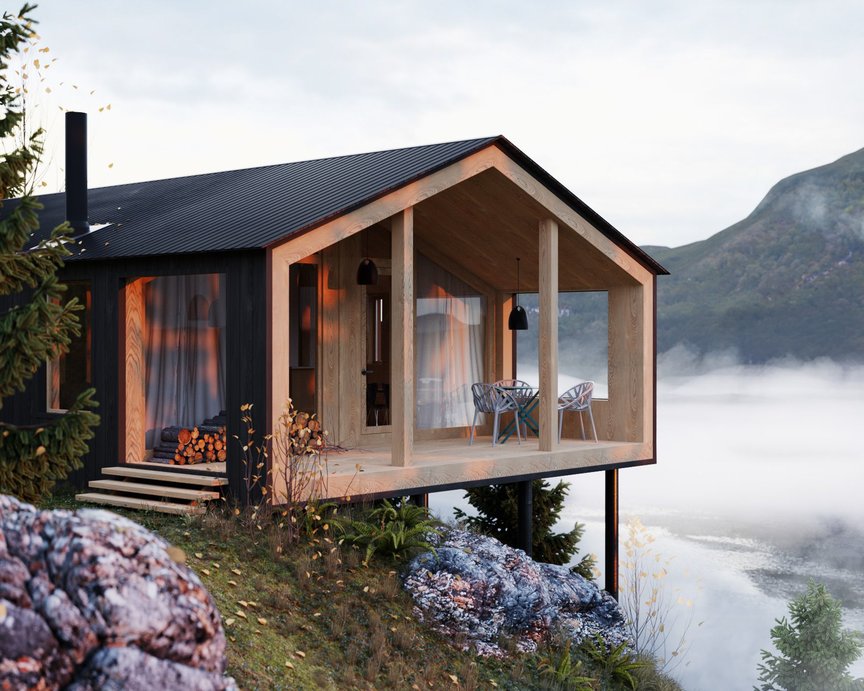
Different types of Scandinavian minimalism
Among the countries at the heart of minimalist Scandinavian design, there remain some crucial stylistic differences. Denmark, for example, is known for creating minimalist living spaces in urban environments. Even in the many cities outlying Copenhagen or larger metropolitan areas, famed designers and architects have erected award-winning homes that thoughtfully facilitate minimalist living.
In Sweden, the concept of lagom, meaning 'just right', is related to minimalism in that it favours balance, moderation and sustainability. Lagom leads to a Swedish aesthetic that is decidedly unfussy, featuring muted colour palettes and clean lines.
A host of renowned Norwegian designers, such as Jan Inge Hovig, Kirsten Sand and Kjell Kosberg, have shaped skylines and communities throughout the country for decades. Designers like Øyvind Wyller are leading the next generation, who remain heavily influenced by Scandinavian minimalism, but are eager to bring new ideas to life and innovate in public spaces.
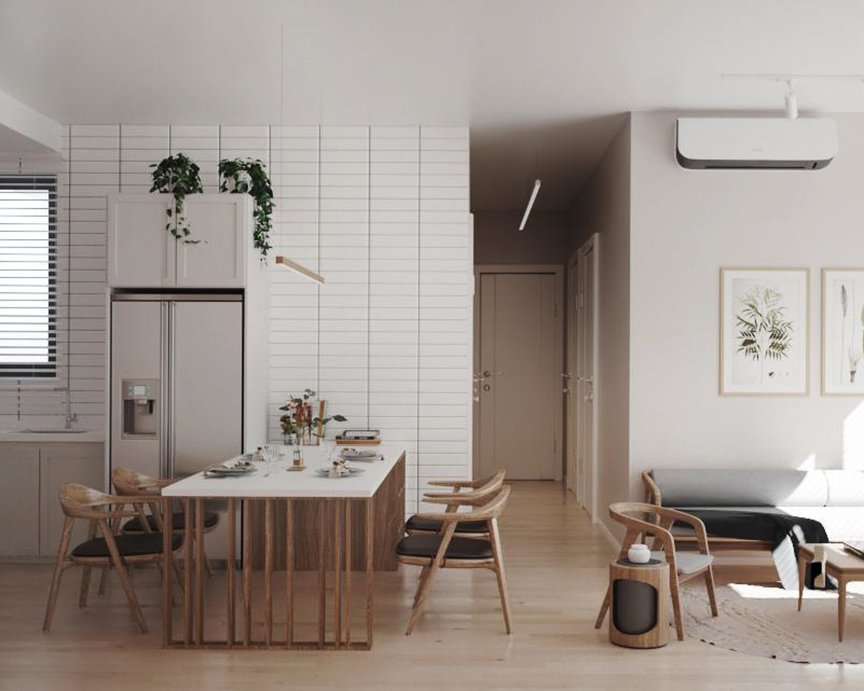
The history of Scandinavian minimalism
The beginnings of Scandinavian minimalism are traceable to the 1930s. Early proponents include Alvar Aalto and Maija Isola (Finland), Arne Jacobsen (Denmark) and Josef Frank (Sweden). These artists were influenced by the Bauhaus School of Design, architecture and applied arts, which operated in Germany from 1919 to 1933. The school — later considered a movement — favoured spartan elegance and everyday functionality.
The essential tenets of Scandinavian minimalism travelled westward in the 1950s and were popularised when larger household and furniture brands began manufacturing similar goods. IKEA is a notable company that leverages Swedish design principles to create affordable goods that sell worldwide. IKEA fans enjoy signature products like the Billy bookcase because they are inherently versatile and optimise space.
Today, many modern Scandinavian minimalist brands are thriving. Axel Arigato is renowned for producing effortlessly sleek trainers that embrace clean silhouettes and quality craftsmanship; Acne Studios is regarded as the face of Scandinavian minimalist clothing; while speaker brand, Bang & Olufsen, create premium audio systems that double as avant-garde interior design pieces.

Scandinavian minimalism vs minimalism
The term ‘minimalism’ has a few different meanings, and the impression it carries has become increasingly subjective as the movement has grown. For instance, some perceive minimalism as a sparse, bare lifestyle choice in which few possessions are owned and a person can find satisfaction in fewer resources. Others consider minimalism as the shedding of material goods in pursuit of spiritual endeavours. Minimalism does mean ‘less’ or a decrease. In that sense, both these definitions are accurate.
Scandinavian minimalism should be considered historically, as it emerged from the aforementioned environmental and cultural climate. In the context of design, Scandinavian minimalism is not about how many possessions someone owns, and whether it is morally or spiritually healthy to own more or fewer things, but rather about the blend of utility and beauty.
While spiritual outcomes may not be the primary aim of Scandinavian minimalism, investing in well-crafted, expertly-designed products will ultimately decrease waste. The most meaningful connection between the wider minimalist movement and Scandinavian minimalism is a desire for simplicity.
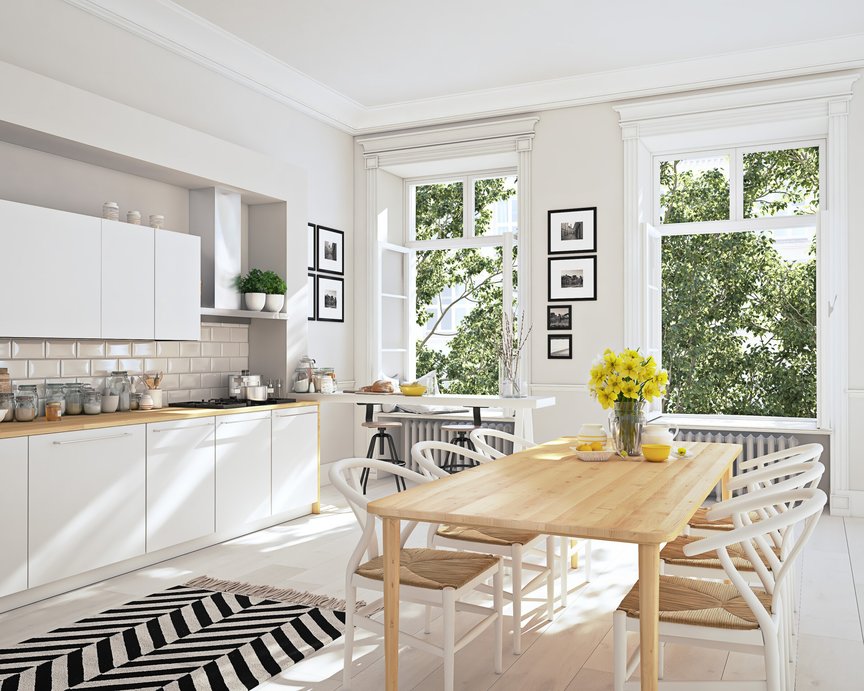
Scandi minimalist interior design tips
The goal of Scandinavian minimalist interior design is to create lightness, openness and a feeling of freedom. Here are some ways to achieve this in your office or home.
Encourage natural light
In some Scandinavian countries, the summer months see 24 hours of sunlight, with a midnight sun for as many as six months at a time. The unique cadence of sunlight and moonlight encourages homeowners to use light inventively. Wide-open windows, positioned for either morning or evening sunlight, are prized. Window trim, window treatments or dressing, and even the colour of windows or arrangement of glass can all be optimised to control and capture light.
Reduce clutter
The pleasure of minimalism stems from the theory that ‘less is more’. Reducing clutter is a great place to start. In Scandi minimalism, this is often applied by using fewer items in a given room or on a given surface. The items that are there are chosen with great care, and positioned to bring enjoyment and ease.
Optimise space
Thoughtful space allocation is key. There are more space optimisation techniques available to the average business person or individual than ever, due in part to a trend of tiny home living. For example, many furniture items made by Nordic designers will have multiple uses or be convertible. Items that are practical and adaptable can enlarge even a small home or office.
Buy items that are built to last
True fans of Scandinavian minimalism purchase items that are durable and long-lasting. Most homes in Denmark or Norway have designer chairs, often bought from Eames or other high-end producers. It is a point of pride to own one or more of these luxury items, which are both iconic and treasured.
Use subtle colours and tones
In a land of intense sunlight and bitter cold, colour provides a visual respite. Often, Scandinavian minimalist designs will have single-tone, neutral walls with accent colours in furniture or textiles. These are often accompanied by geometric or linear blankets, pillows, and sumptuous items that support a lifestyle of hygge.
Promote hygge
Traditionally, hygge is a daily indoor ritual that features warm beverages or good food, gentle candlelight, and feelings of wellness and contentment. Meik Wiking, an author who writes on Danish living, explains that “It doesn’t cost money to light a room correctly — but it does require culture”.
Hygge is a cultural element that has become something of a movement, making its way in various forms throughout the world. It is supported by a very specific kind of ambience, achieved by a specific decor and integrating certain products.
While many of the items people place in a home or office decorated in this style are valuable, it is not the inherent worth but rather the usefulness that lends them meaning.
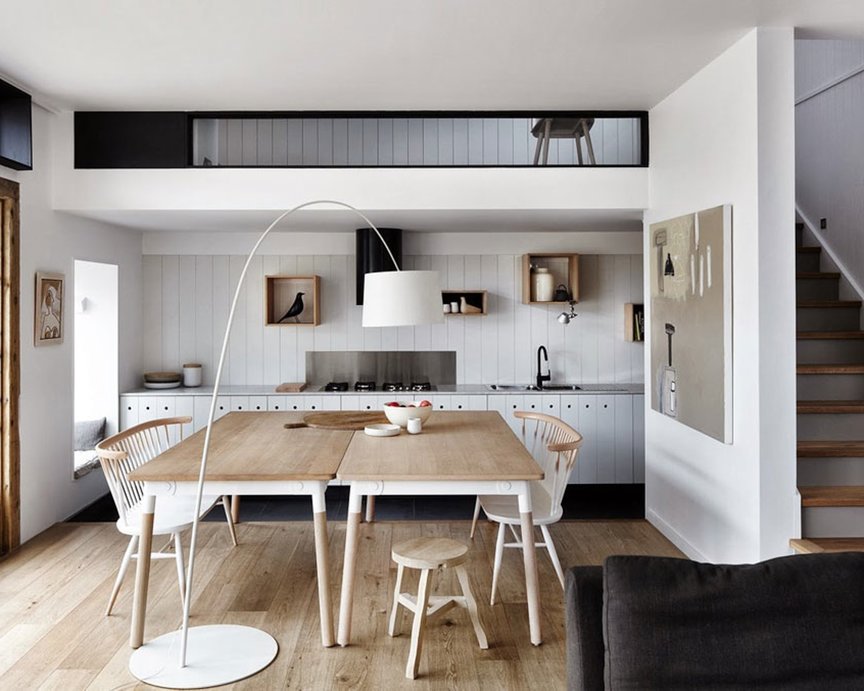
Carl Friedrik and Scandinavian minimalism
Carl Friedrik is directly influenced by Scandinavian minimalism. From our earliest days, we have been dedicated to the use of fine materials and artisanal craftsmanship. Our bags, luggage and wallets share a pared-back aesthetic and are a testament to the belief that form should follow function. All this means that our entire collection is now supported by a lifetime warranty.
These three products illustrate our commitment to Scandinavian minimalist design principles:
Palissy Briefcase is a contemporary, slim leather briefcase that comes in four warm shades with two colour lining options. Perfectly smooth leather, a neatly exposed Raccagni zipper, and clean-cut lines make this modern and functional receptacle an ideal bag for everyday use.
Swanfield is a streamlined bi-fold wallet that comes in three traditional colours. It holds only the essentials, leaving no room for clutter and offering easy access to bills and cards.
The Leather Desk Mat provides the perfect platform for conducting business. Made with vegetable-tanned Vachetta leather, this supple yet durable piece is perfectly suited for any desk, elevating the office experience with effortless sophistication.
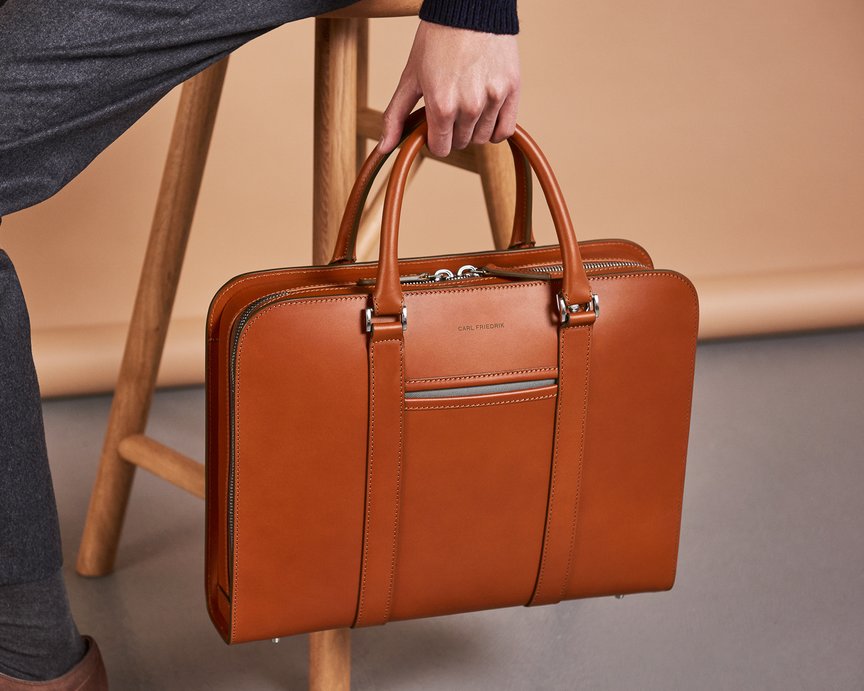
Takeaway
The Scandinavian minimalist model underscores the value of simplicity and quality in all areas of life, but especially design. It’s an approach that we’ll continue to embrace here at Carl Friedrik.